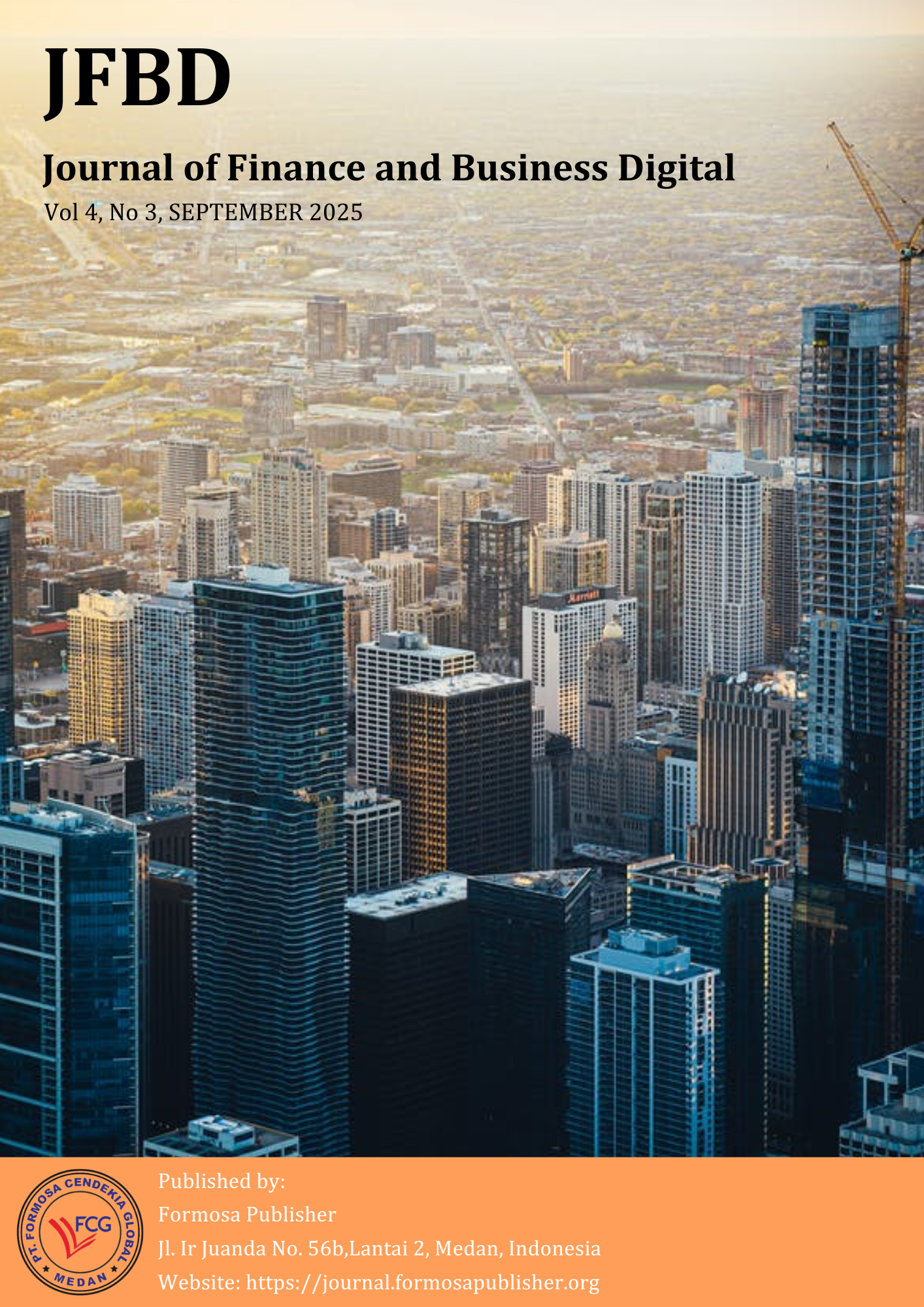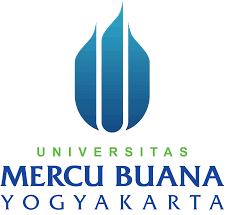Factors Influencing Interest in Receiving Payments through QRIS in MSMEs in Malang City
DOI:
https://doi.org/10.55927/jfbd.v4i3.332Keywords:
Interest, Perceived Ease of Use, Perceived Usability, Perceived Trust, Perceived SecurityAbstract
The purpose of this study is to determine the influence of Perceived Ease of Use, Perceived Usefulness, Perceived Trust, and Perceived Security on the interest of MSMEs in Malang City to receive payments through QRIS. This type of research is a quantitative research by distributing a questionnaire that received 126 re-respondents. The results of the study show that Perceived Ease of Use, Perceived Trust, and Perceived Security have a positive effect on the interest of MSMEs in Malang City in receiving payments through QRIS. Meanwhile, Perceived Usefulness has no effect on the interest of MSMEs in Malang City in receiving payments through QRIS. The results of this study are expected to be used as a consideration for improving the aspect of Perceived Usefulness that does not affect the interest in using QRIS and maintains the quality of Perceived Ease of Use, Perceived Trust, and Perceived Security.
References
Abid, M. (2021). Belajar Memulai Binis Umkm. Entrepreneurial Mindsets & Skill, 35, 35.
Ajayi, L. B. (2014). Effect of cashless monetary policy on Nigerian banking industry: Issues, pro- spects and challenges. International Journal of business and finance management re- search, 2(1), 23-34.
Anam, Choirul. (2024). Merchant QRIS di Wilayah Kerja BI Malang Mencapai 602.347 Usaha.
Arikunto, S. (2019). Prosedur Penelitian. Jakarta: Rineka cipta.
Arta, T. L. F., & Azizah, S. N. (2020). Pengaruh Perceived Usefulness, Perceived Ease of Use dan E-Service Quality Terhadap Keputusan Menggunakan Fitur Go-Food dalam Aplikasi Gojek. Jurnal Ilmiah Mahasiswa Manajemen, Bisnis Dan Akuntansi (JIMMBA), 2(2), 291-303.
Ayu, N. I., & Rahayu, Y. S. (2022). Pengaruh Islamic marketing mix terhadap keputusan menjadi nasabah dengan minat sebagai variabel mediasi. Jurnal Tabarru’: Islamic Banking and Fi- nance, 5(2), 326-337.
Bawono, A. (2006). Multivariate Analysis dengan SPSS. Salatiga: STAIN Salatiga press. Buntarman, C., & Rodhiah, R. (2022). Pengaruh Ease of Use, Trust, dan Privacy Concern terhadap Repurchase Intention pada Situs Jual Beli Online Bukalapak. Jurnal Manajerial Dan Kewirausahaan, 4(2), 301-309.
Cao, T. K., Dang, P. L., & Nguyen, H. A. (2016). Predicting consumer intention to use mobile pay- ment services: Empirical evidence from Vietnam. International Journal of Marketing Stud- ies, 8(1), 117-124.
Chawla, D., & Joshi, H. (2019). Consumer attitude and intention to adopt mobile wallet in India– An empirical study. International Journal of Bank Marketing, 37(7), 1590-1618.
Chellappa, R. K., & Pavlou, P. A. (2002). Perceived information security, financial liability and consumer trust in electronic commerce transactions. Logistics Information Management, 15(5/6), 358-368.
Cholifah, R. N. (2020). Pengaruh Perceived Usefulness, Perceived Ease of Use Dan Trust Ter- hadap Intention To Use (Studi Kasus Pengguna Dana Pada Tix Id Di Tangerang Selatan Dan Jakarta Selatan) (Bachelor's thesis, Fakultas ekonomi dan bisnis uin jakarta).
Davis, F. D. (1989). Perceived usefulness, perceived ease of use, and user acceptance of infor- mation technology. MIS quarterly, 319-340.
Dedy Irawan, J., & Adriantantri, E. (2018). Pemanfaatan QR-Code Segabai Media Promosi Toko. Jurnal Mnemonic, 1(2).
Ghozali, I. (2021). Aplikasi Analisis Multivariate dengan Program IBM SPSS 26. Edisi 10. Cetakan Kesepuluh. Badan Penerbit Universitas Diponegoro: Semarang.
Hartono, E., Holsapple, C. W., Kim, K. Y., Na, K. S., & Simpson, J. T. (2014). Measuring perceived security in B2C electronic commerce website usage: A respecification and validation. De- cision support systems, 62, 11-21.
Keni, K. (2020). How perceived usefulness and perceived ease of use affecting intent to repur-chase?. Jurnal Manajemen, 24(3), 481-496.
Kumala, D. C., Pranata, J. W., & Thio, S. (2020). Pengaruh perceived usefulness, perceived ease of use, trust, dan security terhadap minat penggunaan gopay pada generasi x di surabaya. Jurnal Manajemen Perhotelan, 6(1), 19-29.
Kurnia, R. A., & Tandijaya, T. N. B. (2023). Pengaruh Perceived Ease of Use, Perceived Usefulness, Security dan Trust Terhadap Intention to Use Aplikasi Jago. Jurnal Manajemen Pemasa- ran, 17(1), 64-72.
Loanata, T., & Tileng, K. G. (2016). Pengaruh trust dan perceived risk pada intention to use menggunakan technology acceptance model (Studi kasus pada situs e-commerce trave- loka). Jurnal Informatika dan Sistem Informasi, 2(1), 64-73.
Maharani, S. A., & Sundari, E. (2024). Pengaruh Perceived Usefulness, Perceived Ease of Use, Trust dan Security terhadap Behavioral Intention to Use BRI Mobile (Studi Kasus: pada Pengguna BRImo di Kota Pekanbaru). Al Qalam: Jurnal Ilmiah Keagamaan dan Kemasyara- katan, 18(1), 161-176.
Mulyani, H. S., Sudirno, D., & Purnamasari, N. (2023). ANALISIS PENGGUNAAN E-FILING BER- DASARKAN KEMUDAHAN DAN MINAT PERILAKU WAJIB PAJAK ORANG PRIBADI. Entrepre-neur: Jurnal Bisnis Manajemen dan Kewirausahaan, 4(1), 133-142.
Mulyatiningsih, E. (2012). Metode Penelitian Terapan Bidang Pendidikan. Bandung: Alfabeta. Naufaldi, I., & Tjokrosaputro, M. (2020). Pengaruh perceived ease of use, perceived usefulness, dan trust terhadap intention to use. Jurnal Manajerial Dan Kewirausahaan, 2(3), 715-722.
Nurdin, N., Azizah, W. N., Rusli, R., Nurdin, N., Azizah, W. N., & Rusli, R. (2020). Pengaruh Penge- tahuan, Kemudahan dan Risiko Terhadap Minat Bertransaksi Menggunakan Finansial Technology (Fintech) Pada Mahasiswa Institut Agama Islam Negeri (IAIN) Palu. Jurnal Per-bankan dan Keuangan Syariah Vol, 2(2).
Pranatawijaya, V. H., Widiatry, W., Priskila, R., & Putra, P. B. A. A. (2019). Penerapan Skala Likert dan Skala Dikotomi Pada Kuesioner Online. Jurnal Sains dan Informatika, 5(2), 128-137.
Prasetya, A. W., & Lestari, R. (2024). The Influence Of Trust, Perceived Ease Of Use, Per- Ceived Usefulness Through Attitudes On Intention to Use The Gopay Applica-Tion In The Millennial Generation In South Jakarta. Journal of Economic, Bussines and Accounting (COSTING), 7(5), 4438-4457.
Prasetya, H., & Putra, S. E. (2020). Pengaruh persepsi kemudahan, manfaat dan risiko pada minat penggunaan e-money di Surabaya. Jurnal Dinamika Ekonomi Dan Bisnis, 17(2), 151-158.
Purnomo, R. A. (2017). Analisis Statistik Ekonomi dan Bisnis dengan SPSS. Ponorogo: CV. Wade Group.
Purwanto, E., & Budiman, V. (2020). Applying the technology acceptance model to investigate the intention to use e-health: a conceptual framework. Technology Reports of Kansai Uni- versity, 62(05), 2569-2580.
Putra, Bayu Mulya. (2024). Merchant QRIS di Kota Malang Meningkat 26,5 Persen.
Rivaldi, S., & Dinaroe, D. (2022). Faktor-faktor yang Mempengaruhi Minat Penggunaan Fintech pada Umkm di Kota Banda Aceh Menggunakan Pendekatan Technology Acceptance Model (TAM). Jurnal Ilmiah Mahasiswa Ekonomi Akuntansi, 7(1), 1-15.
Safari, A., & Riyanti, A. (2023). Analisis Technology Acceptance Model (TAM) Terhadap Minat Penggunaan Mobile Banking. Jurnal Ilmiah Edunomika, 8(1).
Sandy, E., & Firdausy, C. M. (2021). Pengaruh Perceived Usefulness, Perceived Ease of Use dan Trust terhadap Minat Konsumen dalam Penggunaan Ulang Go-Pay di Kota Jakarta. Jurnal Manajemen Bisnis Dan Kewirausahaan, 5(1), 22-27.
Sekarsari, K. A. D., Sulistyaningrum, C. D., & Subarno, A. (2021). Optimalisasi penerapan quick response code indonesia standard (qris) pada merchant di wilayah surakarta. JIKAP (Jurnal Informasi Dan Komunikasi Administrasi Perkantoran), 5(2), 42-57.
Setiawan, M. H., Komarudin, R., & Kholifah, D. N. (2022). Pengaruh Kepercayaan, Tampilan Dan Promosi Terhadap Keputusan Pemilihan Aplikasi Marketplace. Jurnal Infortech, 4(2), 139- 147.
Seetharaman, A., Kumar, K. N., Palaniappan, S., & Weber, G. (2017). Factors influencing behav- ioural intention to use the mobile wallet in Singapore. Journal of Applied Economics and Business Research, 7(2), 116-136.
Sinaga, O. S., Marpaung, F. K., Dewi, R. S., & Sudirman, A. (2021). Kontribusi perceived useful- ness, perceived ease of use dan perceived security terhadap behavioral intention to use aplikasi JAKET. Insight Management Journal,, 1(3), 86-94.
Suh, B., & Han, I. (2002). Effect of trust on customer acceptance of Internet banking. Electronic Commerce research and applications, 1(3-4), 247-263.
Sujarweni, W. (2014). Metodologi penelitian: Lengkap, praktis, dan mudah dipahami. Suprapto, Y., & Farida, F. (2022). Analisis pengaruh brand image, trust, security, perceived use-fulness, perceived ease of use terhadap adoption intention fintech di Kota Batam. Jesya (Jurnal Ekonomi dan Ekonomi Syariah), 5(1), 319-332.
Tahar, A., Riyadh, H. A., Sofyani, H., & Purnomo, W. E. (2020). Perceived ease of use, perceived usefulness, perceived security and intention to use e-filing: The role of technology readi- ness. The Journal of Asian Finance, Economics and Business, 7(9), 537-547.
Trihutama, R. P. (2020). Pengaruh perceived ease of use, perceived usefulness, dan trust ter- hadap behavioral intention to use (Studi pada pengguna Go-Pay layanan Go-Jek). Jurnal Kajian Manajemen Dan Wirausaha, 2(2), 1-15.
Downloads
Published
Issue
Section
License
Copyright (c) 2025 Aubrey Rayhannaufa Khan, Rizka Fitriasari

This work is licensed under a Creative Commons Attribution 4.0 International License.

























